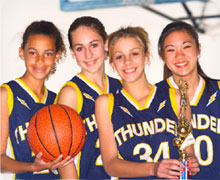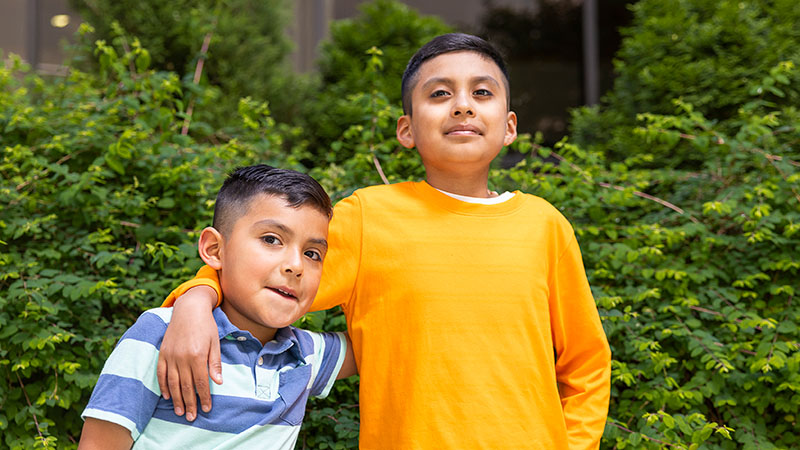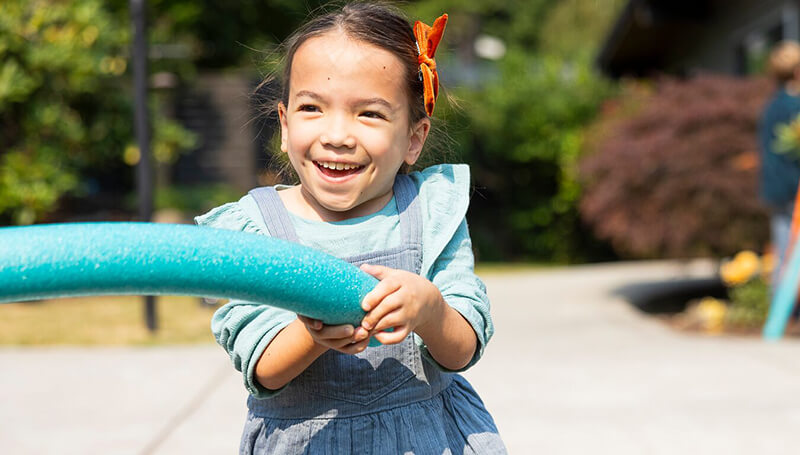Preventing and Treating Basketball Injuries
 Basketball is fun for everyone, from young kids to teens to grown-ups. As with any sport, there is a risk of injury. Follow these tips to help prevent injuries in your child or teen while they play basketball. This page also provides guidance on how to treat some of the most common basketball injuries children and teens experience.
Basketball is fun for everyone, from young kids to teens to grown-ups. As with any sport, there is a risk of injury. Follow these tips to help prevent injuries in your child or teen while they play basketball. This page also provides guidance on how to treat some of the most common basketball injuries children and teens experience.
Tips to Prevent Basketball Injuries
Help your child or teen prevent getting injured on the court by having them:
- Be ready for the season by getting exercise year-round. They should be physically active for at least 1 hour each day.
- Wear gym shoes that fit snugly, are non-skid and have high tops. Help preserve the tread by only wearing shoes used on indoor courts indoors.
- Use a mouth guard.
- Wear safety glasses if they normally wear eye glasses.
- Warm up with jogging and light stretching before each session. Cool down with light jogging, then walking, followed by stretches.
- Use proper technique and follow the rules.
- Remove their jewelry.
- Play on a clean, dry, safe surface.
- Eat well-balanced meals and snacks, stay hydrated with water and get enough sleep each night.
Treating Minor Basketball Injuries at Home
Some minor bumps, bruises, scrapes and strains can be treated on the sideline and at home. Clean minor cuts, scrapes, fingernails scratches and floor burns with soap and water and cover with a bandage. See below for common injuries and treatment advice.
Treating injuries with the R.I.C.E. method
The R.I.C.E. method is a way to provide first aid for minor injuries, like sprains, strains and bruises R.I.C.E. stands for:
- Rest: Avoid using the injured area to prevent further strain or damage. Resting allows the body to begin the healing process.
- Ice: Apply a cold pack or ice wrapped in a clean cloth to the injured area for 20 minutes at a time every 2 hours. Do this while awake during the first 24 to 28 hours after injury. This helps reduce swelling and pain.
- Compression: Wrap the injured area with an elastic bandage (like an ACE bandage) to provide support and reduce swelling. Be careful not to wrap it too tightly, as this can restrict blood flow.
- Elevation: Keep the injured area elevated above the level of your child or teen's heart when possible. This helps reduce swelling and encourages proper circulation.
When to See a Doctor for Your Child's Sports Injury
See the common injury information below, call your child's doctor or use our symptom checker for help deciding when your child's injury needs to be seen by their doctor. Getting proper care will help prevent a worse injury, and the provider can help your child get back to basketball in a healthy, efficient manner.
Common Basketball Injuries in Children and Teens
Ankle Sprains
Ankle sprains occur most often when your child or teen lands on another player's foot. In most cases, the ankle turns inward. Pain around the bony bump on the outside of the ankle is normal. Your child may have swelling and/or bruising. Their ankle may feel unstable.
Knee Sprains
Knee sprains can be caused by a sudden stop or change in direction. They can happen with or without contact from another player. Your child or teen's knee may feel like it popped or gave out and may feel unstable after injury. The pain may be in one small spot or throughout the whole knee. Swelling may occur within the joint, feeling like pressure behind the kneecap or in the joint itself. Swelling may or may not be visible.
Treat knee sprains with the R.I.C.E. method. If your child or teen's knee is very unstable, they have a lot of pain, limited range of motion, difficulty bearing weight, or their knee is swollen, popping or clicking, see a doctor to make sure they don't have serious ligament damage.
Head and Face Wounds
Head and face wounds often occur due to a direct blow from another player. The eyes, mouth, chin and nose are easy to injure. Head and face wounds bleed a lot.
Apply direct pressure to the site of the injury to control the bleeding. Wounds that are jagged, gaping open, very deep or wide or won't stop bleeding may require stitches. In these cases, go to the emergency room right away.
Coaches, athletic trainers and players should make sure that clothing and the playing surface are cleaned well before play continues.
Concussions
Concussions can happen with or without a loss of consciousness, or being "knocked out." If your child or teen may have a concussion, they need to stop playing right away. They cannot return to practice or play in a game until they are evaluated and given a written note by a doctor or other licensed healthcare provider trained in the evaluation and treatment of concussions. After a concussion, they should take part in a graduated return to play protocol before being fully cleared with no restrictions.
Some signs and symptoms of concussion are confusion; problems with vision, memory, speech or balance; change in behavior or personality; headache; upset stomach or throwing up; sensitivity to light or sound; and feeling more tired than usual.
Muscle Injury
Muscle injuries can happen from overuse or lack of flexibility. Some muscle injuries may come with swelling, bruising and a visible indent in the muscle. Muscle strains or "pulled muscles" are very common and happen during explosive movements, like sprinting or quick changes in direction. When a muscle is strained, your child or teen may feel like there is a sharp pain when exercising or stretching the muscle.
Treat muscle injuries using the R.I.C.E. method. After a period of resting the muscle, begin strengthening exercises. Gradually return to activity, avoiding fast-paced, activity at first.
Bruises
Bruises are caused by a direct blow or collision with another athlete.
Treat bruises using the R.I.C.E. method. Light stretching and use of the joints above and below the injury can help prevent stiffness and pain.
Jammed Fingers
It is common to jam a finger while playing basketball. Soak the hand in cold water for 20 minutes. You can protect the jammed finger by using medical tape to tape it to the next finger. This is called "buddy taping."
Recover Fully Before Returning to Play
If your child or teen gets injured, ensure that they take the time needed to heal before returning to sports.


